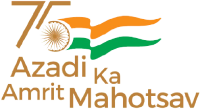Accretion and Outflows/Ejections are fundamental processes in star formation. The relationship between them is symbiotic in nature. The matter accreting from the disk onto the protostar has to lose angular momentum, which provides the energy for the jets and outflows. The centrimetric radio flux from Class I and II young stellar objects mostly originates from collimated winds or jets, which get ionized due to their interaction with the ambient medium. Radio data then permits to estimate the mass-loss rate from this emission, but it does not provide information on accretion variations. Therefore, to test the connection between accretion and ejection, a coordinated radio and near-infrared (NIR) survey of young stellar objects (YSOs) is required. In this regard, we started in 2012 a radio monitoring program of nearby star formation regions using the VLA, complemented with various infrared data. In this contribution, we will present the results of coordinated, quasi-simultaneous observations taken with KMOS-VLT and part of the VLA program in the Corona Australis region. The NIR data permits the estimation of accretion rates via the Brackett Gamma line, which are then compared to the ionised
mass-loss rates derived from VLA continuum data. We find interesting correlations between these tracers for YSOs that are not too evolved. We discuss on the possible interpretations of these trends.
Dr. Arpan Ghosh is currently a postdoctoral Researcher at IRyA, UNAM Morelia, Mexico. He has obtained his Ph.D. from ARIES, Nainital. His research interest is focused on understanding the YSOs through their accretion and Outflows/Ejections.

